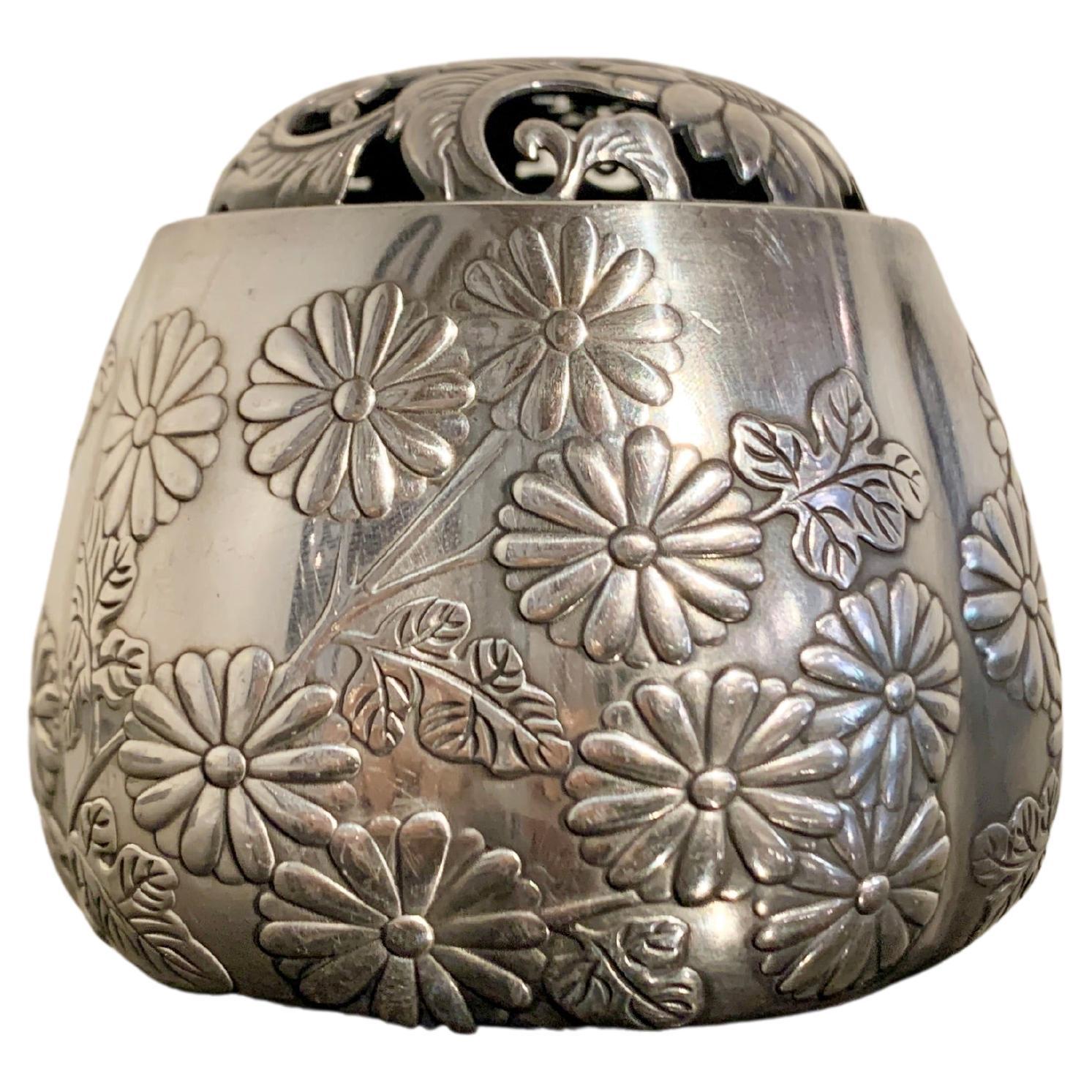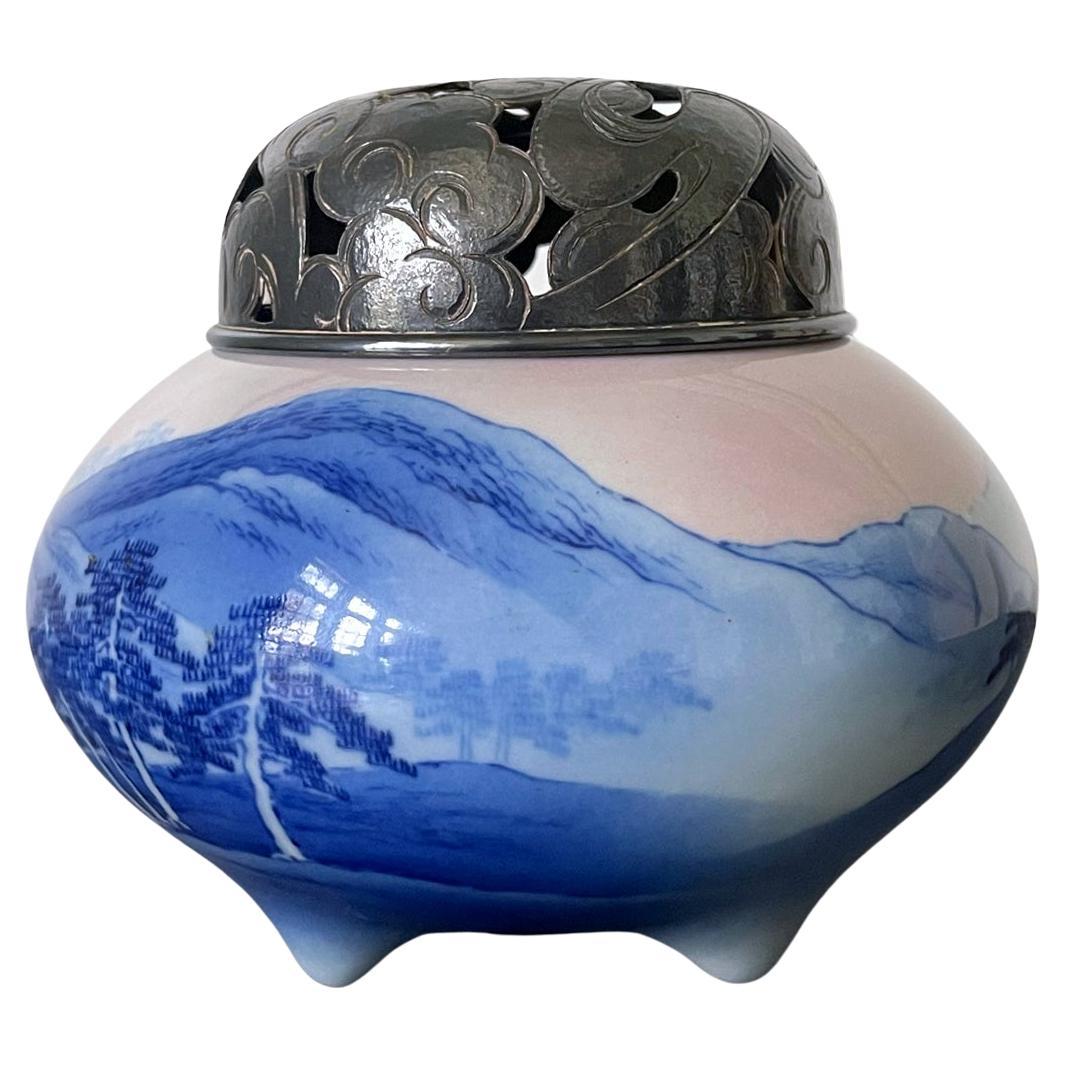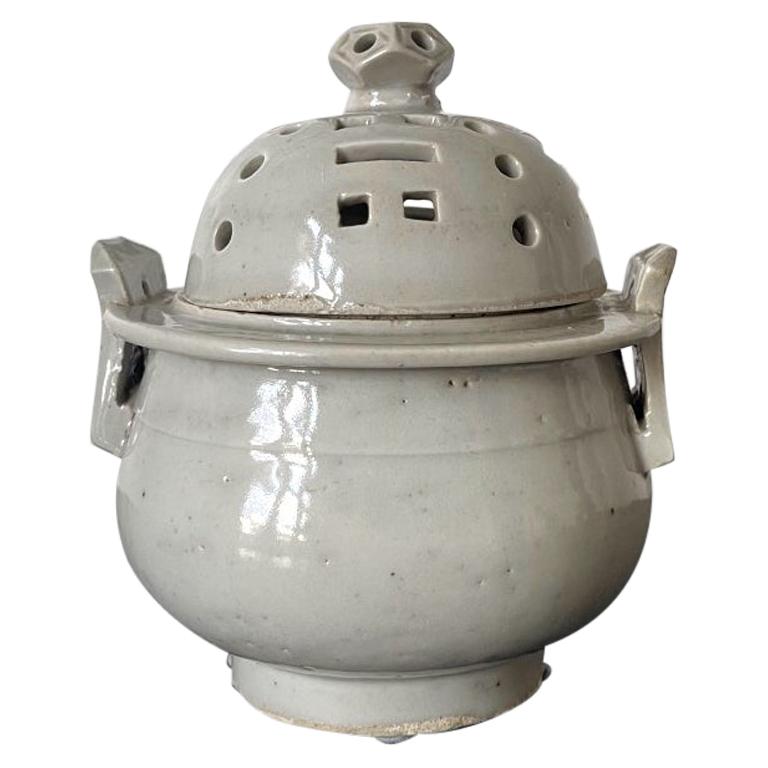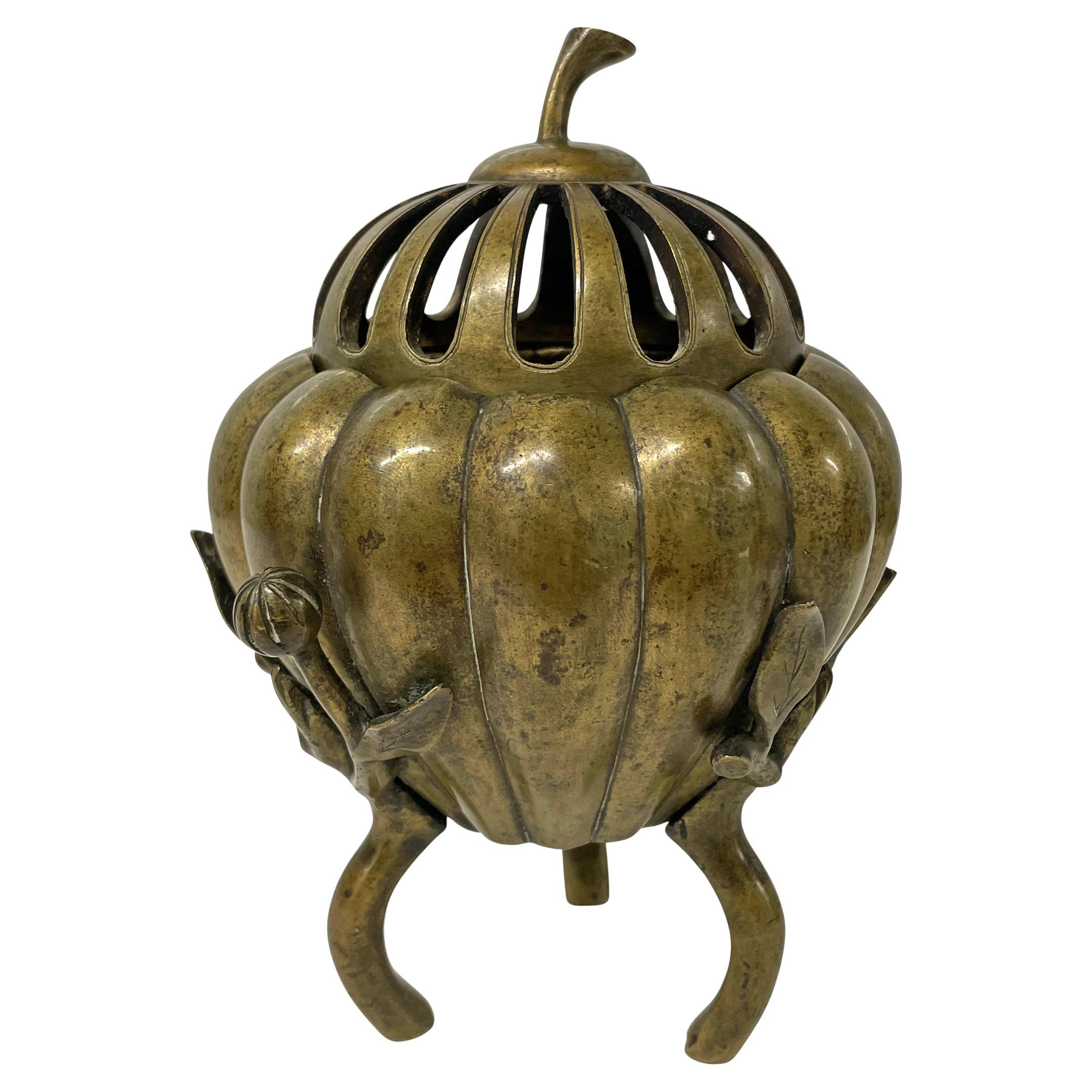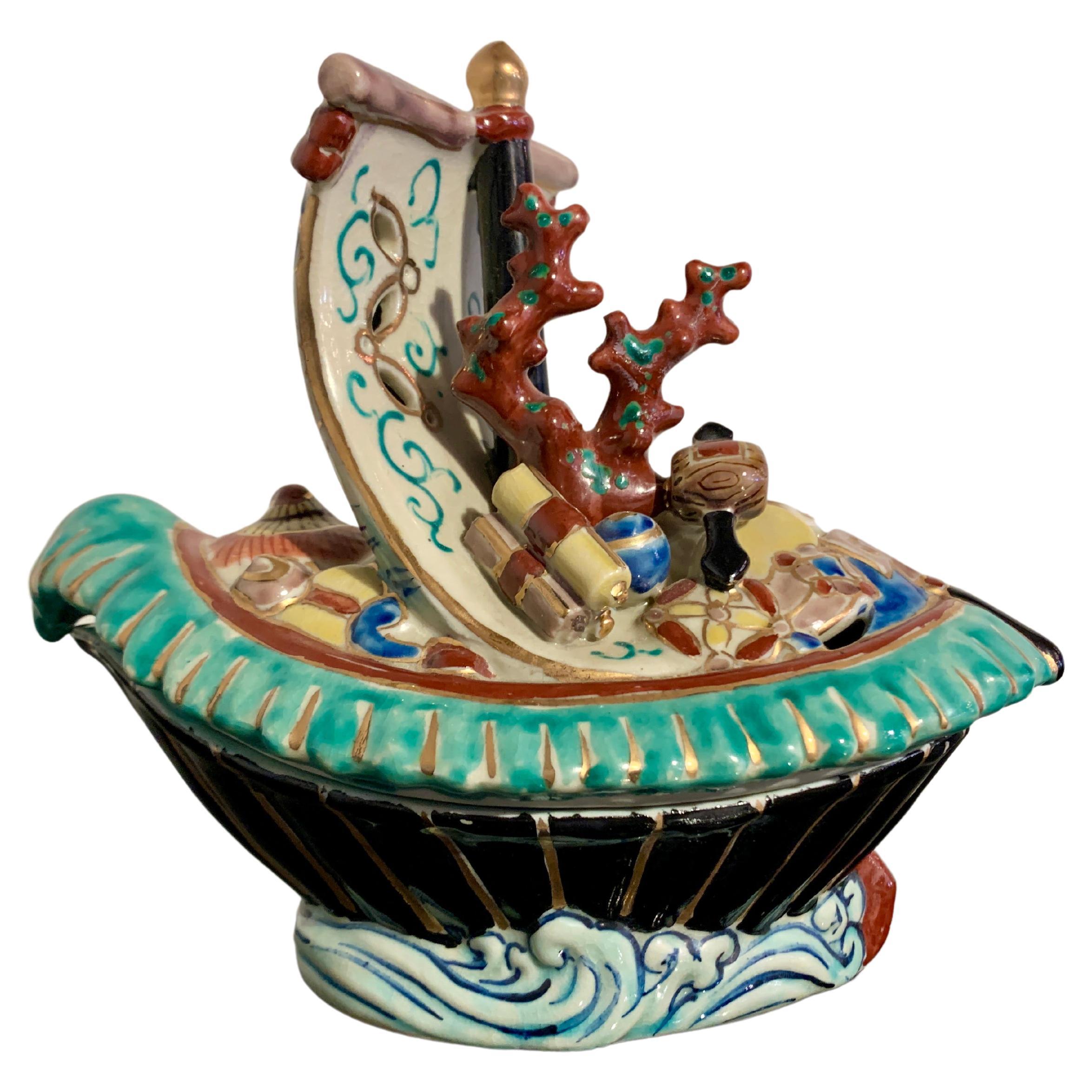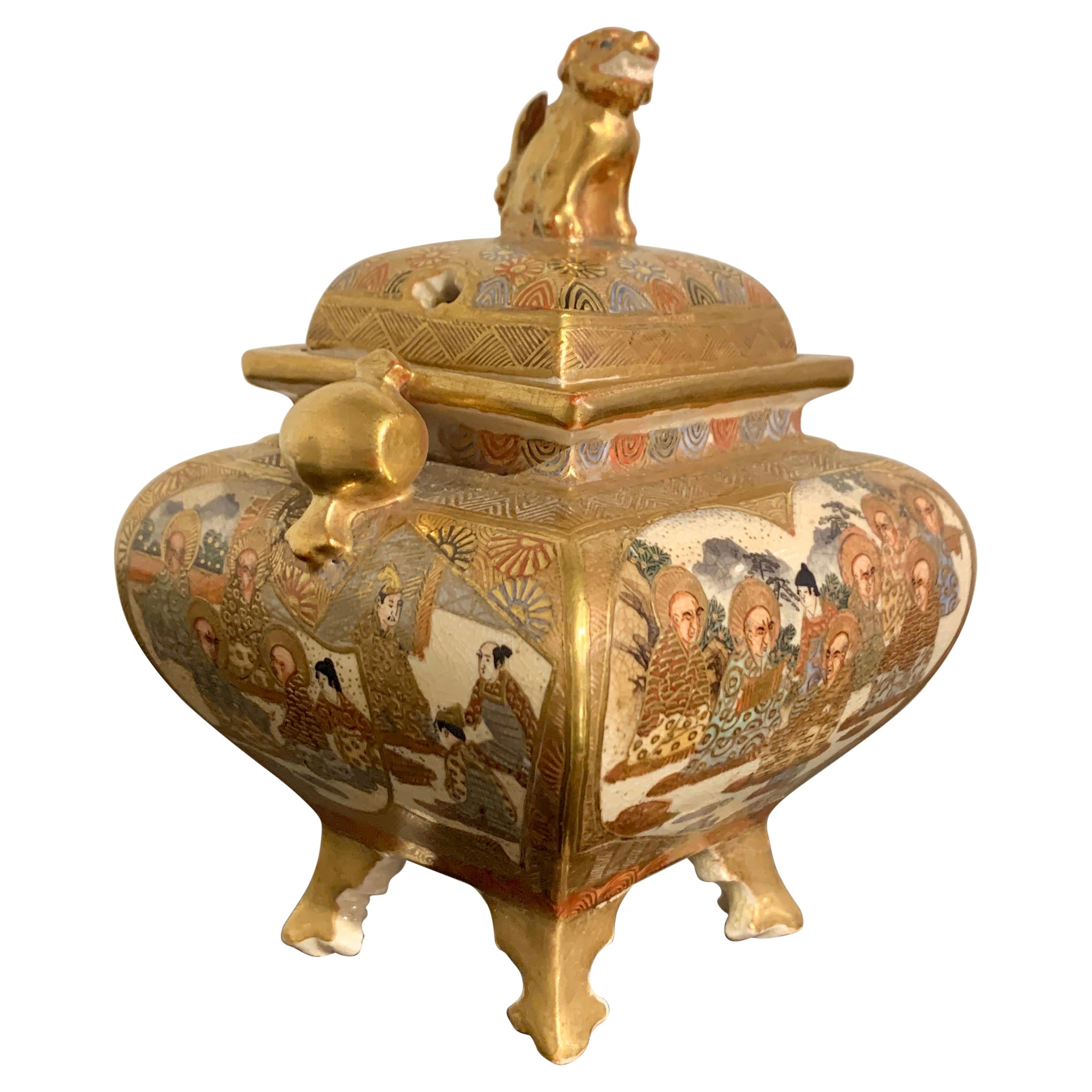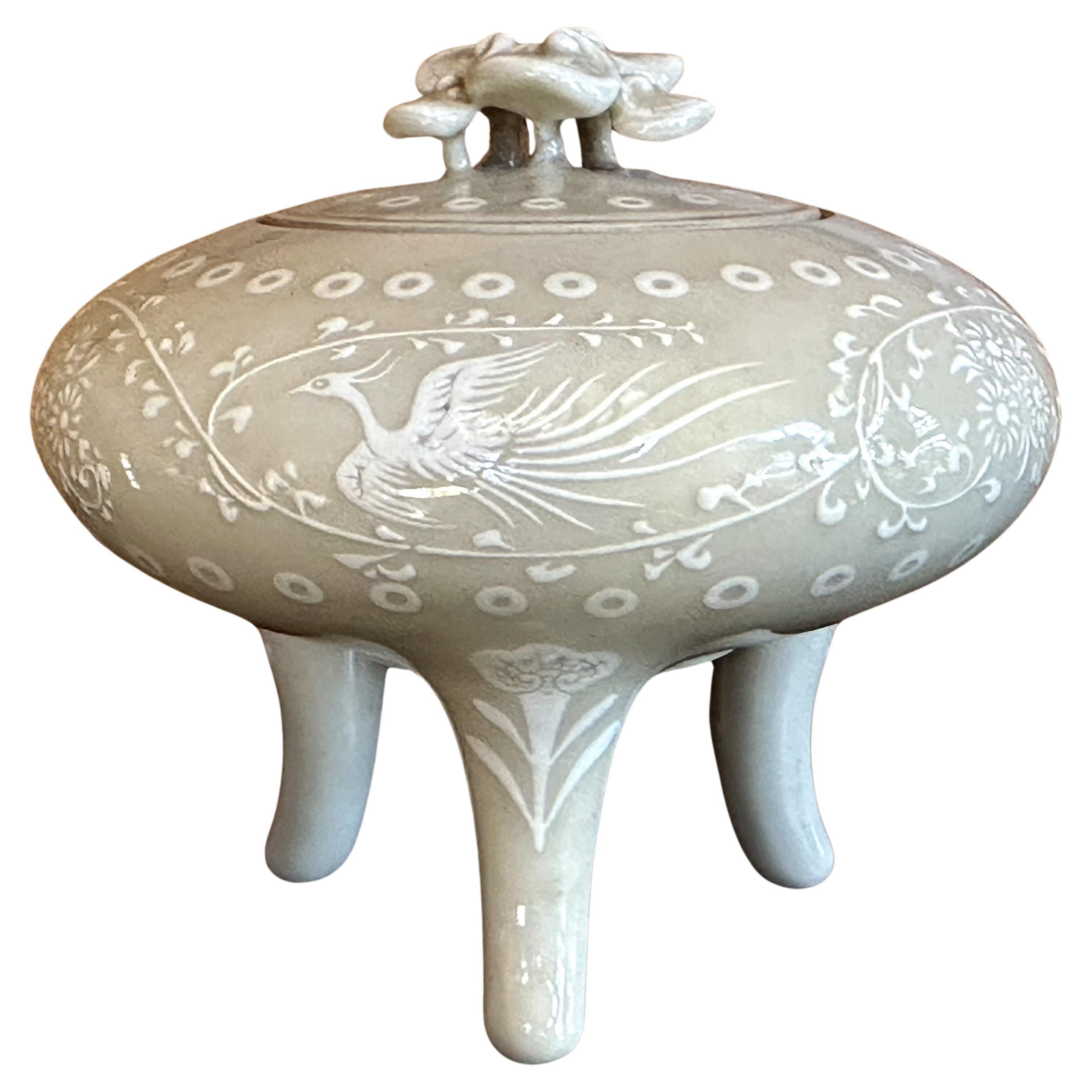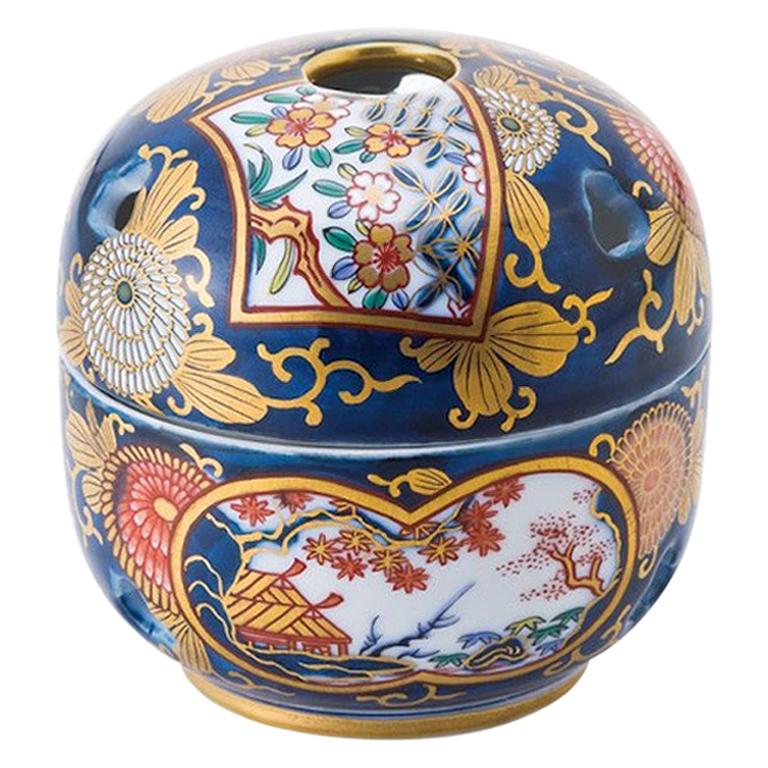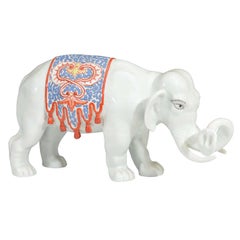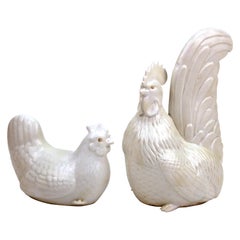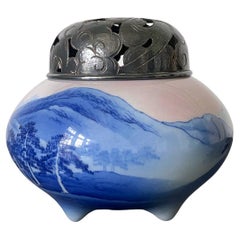
Japanese Meiji Period Kakiemon Porcelain Incense Burner of Daruma
View Similar Items
Want more images or videos?
Request additional images or videos from the seller
1 of 16
Japanese Meiji Period Kakiemon Porcelain Incense Burner of Daruma
About the Item
- Dimensions:Height: 8 in (20.32 cm)Width: 4 in (10.16 cm)Depth: 3.5 in (8.89 cm)
- Style:Meiji (Of the Period)
- Materials and Techniques:
- Place of Origin:
- Period:
- Date of Manufacture:Late 19th Century
- Condition:Wear consistent with age and use.
- Seller Location:New York, NY
- Reference Number:Seller: G228 - 113212 - 11181stDibs: LU889312721181
About the Seller
4.9
Vetted Seller
These experienced sellers undergo a comprehensive evaluation by our team of in-house experts.
1stDibs seller since 2010
2,433 sales on 1stDibs
Typical response time: 2 hours
More From This SellerView All
- Japanese White Porcelain Elephant; Meiji PeriodLocated in New York, NYA Japanese decorative porcelain elephant with red and blue vegetal motif blanket detail. 4383Category
20th Century Japanese Ceramics
MaterialsPorcelain
- Japanese Meiji Hirado Porcelain Rooster & HenBy HiradoLocated in New York, NYJapanese Meiji period pair of rooster and hen, made by Hirado in white-glazed porcelain, with bisque eyes. The pair was made in Japan in circa 1890 and features realistic details. In...Category
Antique 1890s Japanese Meiji Ceramics
MaterialsPorcelain
$1,800 / set - Japanese Meiji Porcelain Charger with Fish ThemeLocated in New York, NYJapanese Meiji period large porcelain charger with fish theme and decorative border. The piece was likely made during the Meiji Period. In gre...Category
Antique 19th Century Japanese Meiji Ceramics
MaterialsPorcelain
- Japanese Meiji Satsuma Vase in Lacquered Porcelain with Golden Fish MotifLocated in New York, NYJapanese Meiji period Satsuma vase in lacquered porcelain with decorative gold fish and red coral motif. The piece was made in circa 1900 and has marks on the bottom. In great vintag...Category
Antique Early 1900s Japanese Meiji Ceramics
MaterialsPorcelain
- A Japanese Blue Cloisenne Meiji Period Vase with Samurai FiguresLocated in New York, NYA Meiji Period Japanese Cloisenne vase with figures of Samurai on one side, and floral decoration on the other.Category
Antique 19th Century Japanese Ceramics
MaterialsEnamel
- Japanese Kutani Porcelain Pekinese Dog Playing with Shinto Shrine BellLocated in New York, NYJapanese Kutani porcelain sculpture of a Pekinese dog, playing with a Shinto shrine bell and wearing a gold ruffle collar. The very expressive figure features a luminous white ground with gold accents and a bright bell rope. A rare and fine masterpiece, frequently known as a symbol of royalty. The Japanese Chin...Category
Antique Late 19th Century Japanese Meiji Ceramics
MaterialsPorcelain
You May Also Like
- Japanese Silver Incense Burner, Akoda Koro, by Norurma, Meiji Period, JapanLocated in Austin, TXA lovely and luxurious Japanese silver incense burner of lobed melon form, akoda koro, marked jungin and signed Nomura, Meiji Period, circa 1900, Japan. The silver koro...Category
Vintage 1910s Japanese Meiji Metalwork
MaterialsSilver, Sterling Silver
- Japanese Glazed Ceramic and Silver Koro Incense Burner Makuzu KozanBy Makuzu KozanLocated in Atlanta, GAA tri-pod ceramic incense burner (koro) by Japanese Imperial potter Makuzu Kozan (1842-1916) circa late Meiji to the start of Taisho period (1890-1910s). A fine example of the artist's work belonging to the late part of his underglaze paint phase (started around 1887 until his death), the surface of the koro was painted in beautiful shades of blue to depict a continuous landscape not unlike a traditional ink and watercolor hand scroll. The rise and fall mountains recede and fade into the horizon and are dotted with groves of pines. The sky is painted with a beautiful subtle shade of pink, suggesting a time of sunrise or sunset. The koro is fitted with an ensuite reticulated sterling silver hoya (incense cover), pierced with swirling cloud and marked with "pure silver' in Kanji. The base is signed in underglaze blue "Makuzu Kozan Sei" within a double ring. The piece is beautifully potted in form and the decoration was done with expertise using the novel technique developed by Kozan called Fuki-e (the blow painting), in order to achieve the striking landscape known as "Mountain and Water" with sense of dimensions and gradient, the poetic effects normally conveyed only by sumi ink staining on paper. The piece comes with an unsigned tomobako (wood storage box) of a recent age. Also known as Miyagawa Kozan (1842–1916), Makuzu Kozan was one of the most established and collected ceramist from Meiji Period. Born as Miyagawa Toranosuke, Kozan established his pottery studio in Yokohama around 1870s and later became one of the appointed artists to the Japanese Imperial household. His work was exhibited in many international fairs that the Meiji government participated at the turn of the century and won many grand prizes. Being one of the most creative ceramists, Kozan started experimenting with new chemical colors from the West in the format of his porcelain glaze around 1880s. New colors allowed him to create underglaze designs that appeared bright, smooth and glossy. He even invented his own receipt of cobalt blue to achieve a much brighter yet softer shade, as evident on this vase. To create landscape that is realistic and dimensional, more common in the western paintings, he was inspired by the native Japanese ink painting technique developed around 1900 by Yokoyama...Category
Antique Early 1900s Japanese Japonisme Ceramics
MaterialsSilver
- Antique Japanese Satsuma Mini Koro Incense Burner Japan Meiji PeriodLocated in Amsterdam, Noord HollandDescription: Fabulous Japanese Satsuma koros. Small red marks on both lid and koro, 19th century. Condition: Overall condition perfect. Size: 85 x 80mm H x D Period: Meiji P...Category
Antique 19th Century Japanese Meiji Ceramics
MaterialsEarthenware
$873 Sale Price20% Off - Japanese Satsuma Incense Burner, Koro, Meiji Period, Late 19th Century, JapanLocated in Austin, TXA fine and elegant Japanese Satsuma tripod incense burner, koro, with pierced metal lid, signed Eizan (?) Meiji Period, late 19th century, Japan. The koro, or censer, features a stoneware body of slightly compressed globular form, supported on three short and squat legs. The wide mouth with a recessed metal rim, and topped by an openwork metal lid topped with overlapping chrysanthemum blossoms of silver repousse. The body of the koro finely painted with fan shaped cartouches. The fans in the foreground with sprays of blossoming chrysanthemum. The fans in the background with intricate geometric brocade designs. The shoulder of the incense burner decorated with cartouches formed as stylized chrysanthemum petals, and intricately decorated with geometric and floral brocade designs. The painting finely done in raised gilt and polychrome enamels, including the highly desirable gosu blue...Category
Antique Late 19th Century Japanese Meiji Ceramics
MaterialsMetal, Silver
- Ceramic Ritual Incense Burner with Bagua Pattern Korean Joseon DynastyLocated in Atlanta, GAAn antique Korean ritual incense burner circa 19th century, late Joseon dynasty. It was made in Bunwon Kiln in Gwangju, Gyeonggi Do, near Seoul. The ceramic container has a thickly b...Category
Antique 19th Century Korean Archaistic Ceramics
MaterialsCeramic
- 19th Century Japanese Bronze Gourd Incense BurnerLocated in Chicago, ILA remarkable 19th century Japanese Meiji cast bronze gourd incense burner with a pierced top with stem handle and supported on three legs, each being a branch with leaves and one with lotus pod.Category
Antique 19th Century Japanese Meiji Metalwork
MaterialsBronze
Recently Viewed
View AllMore Ways To Browse
Japanese Incense Burner
Antique Zen
Zen Antique
Kakiemon Porcelain
Japanese Incense Burner Antique
Porcelain Incense
Antique Incense Burners
Asian Antique Incense
Japanese Kakiemon
Porcelain Incense Burner
Antique Asian Incense Burner
Meiji Incense Burner
Japanese Daruma
Antique Daruma
Japanese Incense Burn
18th Chinese
18th Century China
18th Century Chinese
